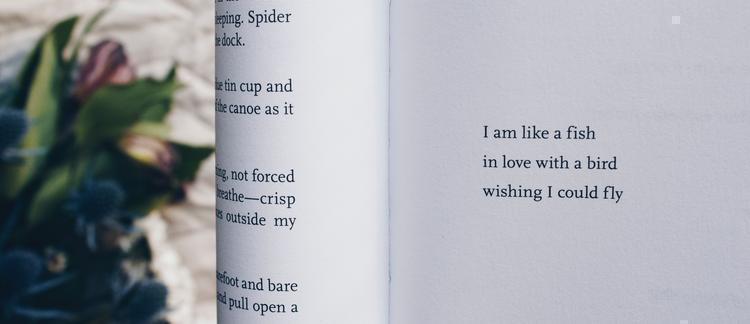The five essays collected here began life as papers delivered to ‘New Papers in Contemporary British Poetry’, a conference we organised at the University of Dundee in March 2015. The explicit aim of that conference was to showcase new critical work on poets now living and working in Britain and to provide a platform for doctoral and early-career researchers in the field to disseminate their research. Of the nine papers submitted and delivered to that conference, we here publish five that have undergone substantial revision in response to peer review. We were grateful, early on, to have the support and close collaboration of this Journal’s editors.
Why restrict a project to early-career researchers and younger critics in this way? It seemed to us then, and still does, that young critics exploring models of critical explanation and context for ‘innovative’ poetic practices face increasingly difficult circumstances in disseminating their work in academia, particularly in a rapidly changing Humanities research culture in the UK and beyond. This is perhaps not the place for an extended jeremiad on the effects on young scholars of ‘impact’ research agendas, tuition fees, part-time and temporary contracts, the TEF proposals and the extended period of self-reflection indulged in by the Humanities generally in the face of political pressures. But generally, it is important for more established academics to pay at least some of their attention to the radically altered prospects for those in their fields who follow them. This issue might be considered a very small response to that general ambition.
There are many who might argue, quite reasonably, that Universities and peer-reviewed journals aren’t the most fertile places for new critical work to emerge. Anyone interested in innovative British poetry might rightly point to the astonishing variety of networks, websites, readings and presses now active that have no institutional affiliation, or at least a very loose one. Nevertheless, peer-reviewed papers remain important for many young scholars, and work published through more traditional scholarly channels prohibits no innovations in other kinds of projects.
Three of these critics are currently working in Scotland, and Alice Tarbuck also focusses her essay on two poets based there, Thomas A. Clark and Alec Finlay. Tarbuck is interested in that poetry produced in response to commission, perhaps a relatively unusual context for ‘innovative’ poetry, but one which naturally opens the question of poetry’s public role, and the ambitions and restrictions that may result. Drawing on the work of Frank Svenaeus, Tarbuck traces the aesthetics and phenomenology of poets’ collaborations in hospital design, cancer care and organ donation. Considering the contribution which visual poetry installed in public locations can make to the enhancement of wellbeing, through the creation of a sense of space and freedom, her article is also an interesting example of how poets and critics might engage with the growing interdisciplinary field of the medical humanities.
Eleanore Widger’s paper, ‘Walking Women: Embodied Perception in Romantic and Contemporary Radical Landscape Poetry’ concentrates on the work of Harriet Tarlo, Frances Presley and Helen Macdonald. Widger draws on Adorno’s Aesthetic Theory and enactivist accounts of embodied cognition in order to articulate the relationship between natural beauty and walking as a mode of contemplation, but also a mode of action. She reads in these poets a development of landscape poetry that can be traced back to the Wordsworths as the most instructive forebears, but particularly to Dorothy Wordsworth’s distinctive eco-poetic perspective, which leads to a feminist discourse of ‘situated knowledge’. Analysing the use of visual form to capture aspects such as breath and embodiment in poems from The Ground Aslant: An Anthology of Radical Landscape Poetry, she concludes by exploring the implications of such poetry for both philosophical and political issues in contemporary understandings of landscape, nature, reality.
Theresa Muñoz provides a new critical review of Tom Leonard’s access to the silence: poems and posters, 1984–2004. Noting that most critical attention has so far been paid to his work in urban dialect, she focuses on his use of experimental forms such as field poetics and text/image poster poems which draw on mass media and electronic poetry. She connects these techniques with the poet’s philosophical investments, analysing what she calls the ‘integration of existential philosophy into [the] poems.’
Ed Luker’s essay on Connie Scozzaro’s remarkable Contrapposto Action Queen (2013) firmly concerns itself with the questions of gender and violence central to that volume, by locating its departures from and critique of two longstanding figures of male fantasy in poetry, Venus and Lamia. This closely-argued paper articulates, through the models of Swinburne and Keats, that Scozzaro’s scenarios are always those where ‘the possible’ as a stay against oppression by gender ‘is always conditioned by fantasy’.
Finally, Louis Goddard’s essay provides a fascinating analysis of J.H. Prynne’s For the Monogram that is, at the same time, a reflection on the justice of competing methodologies in the face of difficult texts. The pressures of self-reflection on the part of critics facing Prynne’s later work in particular will be well known to readers of this Journal. From the premise that For the Monogram is a work that ‘anticipates and even acts out its own mechanized dissection’, Goddard employs the massive database of Google Books to find a literal mechanism for critical understanding, with very interesting results.
Our sincere thanks, especially to Scott Thurston and all the staff of the Journal of British and Irish Innovative Poetry for their insightful, friendly (and patient) partnership in bringing these papers to publication.
Dr. Tim Morris
Prof. Andrew Roberts
Dept. of English, University of Dundee, GB
Competing Interests
The authors have no competing interests to declare.
